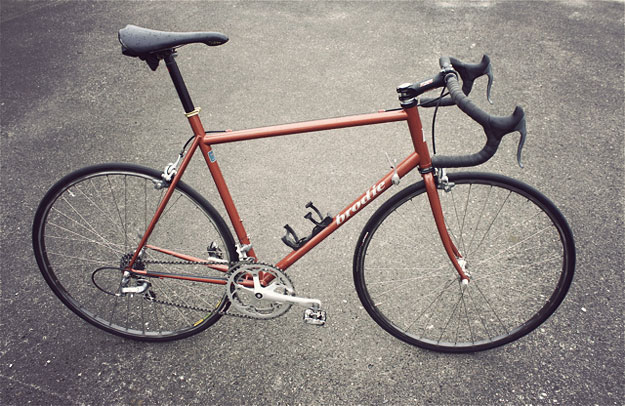
For a student of old-school mountain biking, the name of Canadian Paul Brodie will undoubtedly be familiar. His influence reaches back to 1985, when he was bronze welding frames for Rocky Mountain Bicycles before producing his own frames in 1987.
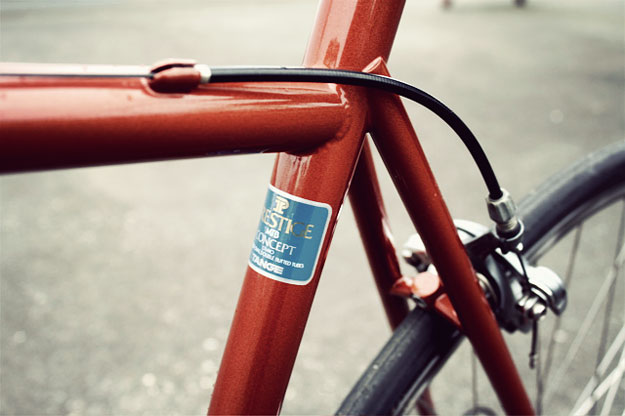
While he has pulled back from the mainstream MTB market, he’s still heavily involved with custom frame building and now teaches Framebuilding 101 at British Columbia’s University of the Fraser Valley. The sloping top tube of modern mountain bikes can be directly accredited to Paul, and can be seen on his personal road frame (the Brodie Roadie?), which has undergone various experiments to finally arrive at a perfected geometry.

Paul tells us, “The frame was built in May 1993, had a Tange Tig welded “D” fork, and was painted British Racing green. It was assembled with Shimano 600 components. With 74/74 angles it rode OK, but I didn’t like it on the fast downhills; it felt like it was on the verge of instability. I shortened the forks by replacing the Tange dropouts with Campagnolo ones I had lying around and reduced the fork rake from 45mm to 35mm. The handling improved a bit”.
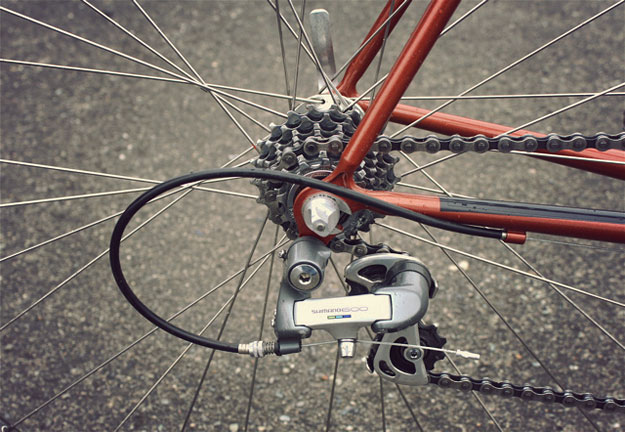
“In 2001 I removed the head tube and top tube and replaced them to slacken the head angle to 73 degrees. The frame and fork still had a 1″ head tube at this time. They got repainted, this time slate grey metallic… a beautiful, subtle Imron color. I went for a ride, and wished I had slackened the head tube just a little more…”
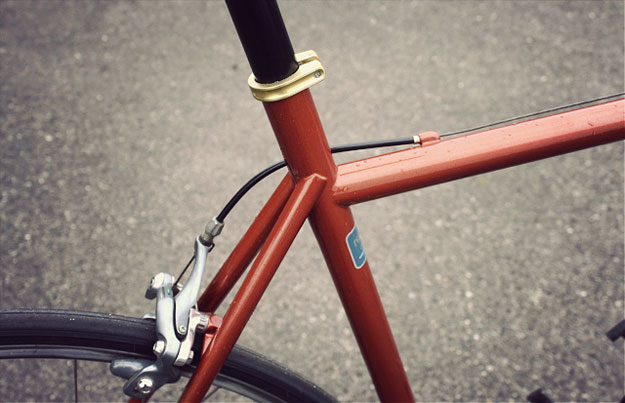
“Ten years later, in February 2011, I decided to modify it again. That’s the beauty of steel; you can. I put the frame back into the jig and discovered that the head angle was actually 73.5 degrees, not 73… I probably hadn’t taken the modified fork dimensions into account (in 2001). This time I cut off the head tube and the down tube. A 1 1/8″ head tube was installed, along with a tapered Tange downtube slightly ovalized at the head tube. Frame jig head angle was set to 72.5 degrees”.
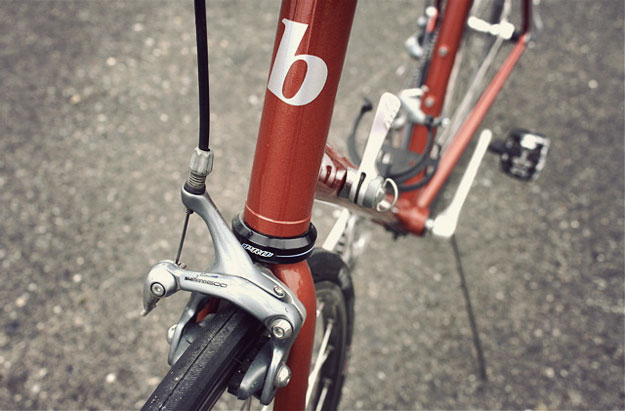
“Changing the head angle one degree increased the trail from 68mm to 73mm. That just left the fork. It still had the old 1″ steerer, so I cut it out, and fillet brazed in a larger steerer tube. The color was changed again to Persimmon metallic. How does it handle now? It’s not a crit bike, but I still consider it to be agile and responsive. I can now let it go on the downhills with confidence”.
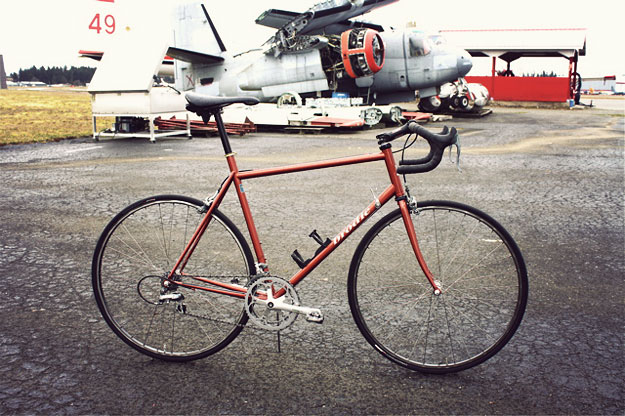
Paul Brodie’s frame-building course is comprehensive and upon completion, you will have a hard tail mountain bike frame that you’ve built yourself on the same jigs Paul used to build over 4,000 frames. If you’re keen to be taught these skills by true masters of the craft, there’s more information on the UFV course outline.




